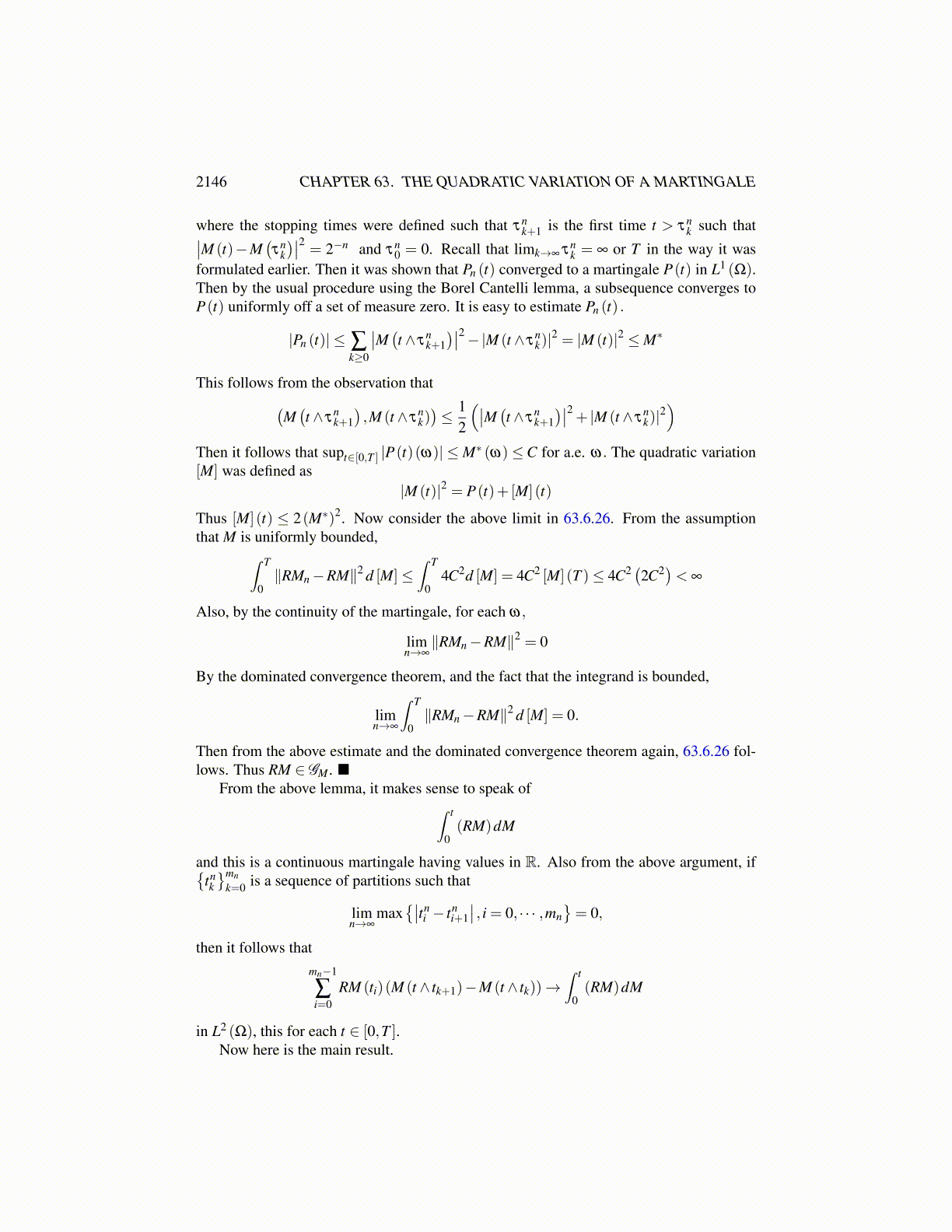
2146 CHAPTER 63. THE QUADRATIC VARIATION OF A MARTINGALE
where Nk is a martingale which equals 0 for t ≤ tk. The above equals
E(∫ t
0∥ f∥2 d [M]
)≡ E
(∫ t
0∥ f∥2 dν
)the integral inside being the ordinary Lebesgue Stieltjes integral for the step function whereν is the measure determined by the positive linear functional
Λg =∫ T
0gd [M]
where the integral on the right is the ordinary Stieltjes integral. Thus, the following in-equality is obtained.
E
(∣∣∣∣∫ t
0f dM
∣∣∣∣2)≤ E
(∫ t
0∥ f∥2 d [M] ,
)(63.6.24)
Now what would it take for
E
(∣∣∣∣∫ t
0f dM
∣∣∣∣2)
(63.6.25)
to be well defined? A convenient condition would be to insist that each ∥ fk∥M∗ is inL2 (Ω) where
M∗ (ω)≡ supt∈[0,T ]
|M (t)(ω)|H
Is this condition also sufficient for the above integral 63.6.25 to be finite? From theabove, that integral equals
E
(m−1
∑k=0∥ fk∥2 |M (t ∧ tk+1)−M (t ∧ tk)|2
)
≤ E
(4
m−1
∑k=0∥ fk∥2 (M∗)2
)Thus the condition that for each k,∥ fk∥M∗ ∈ L2 (Ω) is sufficient for all of the above toconsist of real numbers and be well defined.
Definition 63.6.2 A function f is called an elementary function if it is a step function of theform given in 63.6.22 where each fk is Ftk measurable and for each k,∥ fk∥M∗ ∈ L2 (Ω).Define GM to be the collection of functions f having values in H ′ which have the propertythat there exists a sequence of elementary functions { fn} with fn→ f in the space
L2 (Ω;L2 ([0,T ] ,ν)
)Then picking such an approximating sequence,∫ t
0f dM ≡ lim
n→∞
∫ t
0fndM
the convergence happening in L2 (Ω).